Information session about fit and proper assessments DNB
On Tuesday 28th May from 3:00-4:45 PM CET DNB will organize an online information session about fit and proper assessments.
Read more Information session about fit and proper assessments DNBYou are using an outdated browser. DNB.nl works best with:
Published: 26 April 2022
The countercyclical capital buffer (CCyB) is a macroprudential instrument that aims to protect banks against systemic risks arising from excessive credit growth in a member state. It is a variable add-on to the minimum capital requirements of up to 2.5% of risk-weighted assets – or even higher, should the circumstances dictate.
Since January 2016, DNB publishes the CCyB add-on on a quarterly basis, in accordance with the prevailing rules and regulations. Banks are required to apply the add-on to their exposures to Dutch counterparties. As a rule, CCyB decisions are internationally recognised instruments, which means that non-domestic banks must apply the add-on set by DNB to their Dutch exposures.
At the last decision in September 2020, DNB left the CCyB unchanged at 0 percent. One of the main considerations underlying this decision has been the subdued trend of credit growth. This situation has not fundamentally changed: lending is still showing below-trend growth (Chart 1). This credit gap, as it is known, is internationally considered as one of the key indicators for the CCyB. Besides the credit gap, DNB closely monitors other variables as well, such as trends in real estate prices and credit growth in subsectors (Table 1).
Further, in view of the current uncertainty we see no grounds at this stage to activate the CCyB. More information with regards to this decision can be found in our most recent Financial Stability Report (FSR).
In this light DNB has decided to leave the CCyB unchanged at 0%. DNB intends to build up a CCyB of 2% in the foreseeable future. Additional information about this intention can be found here.
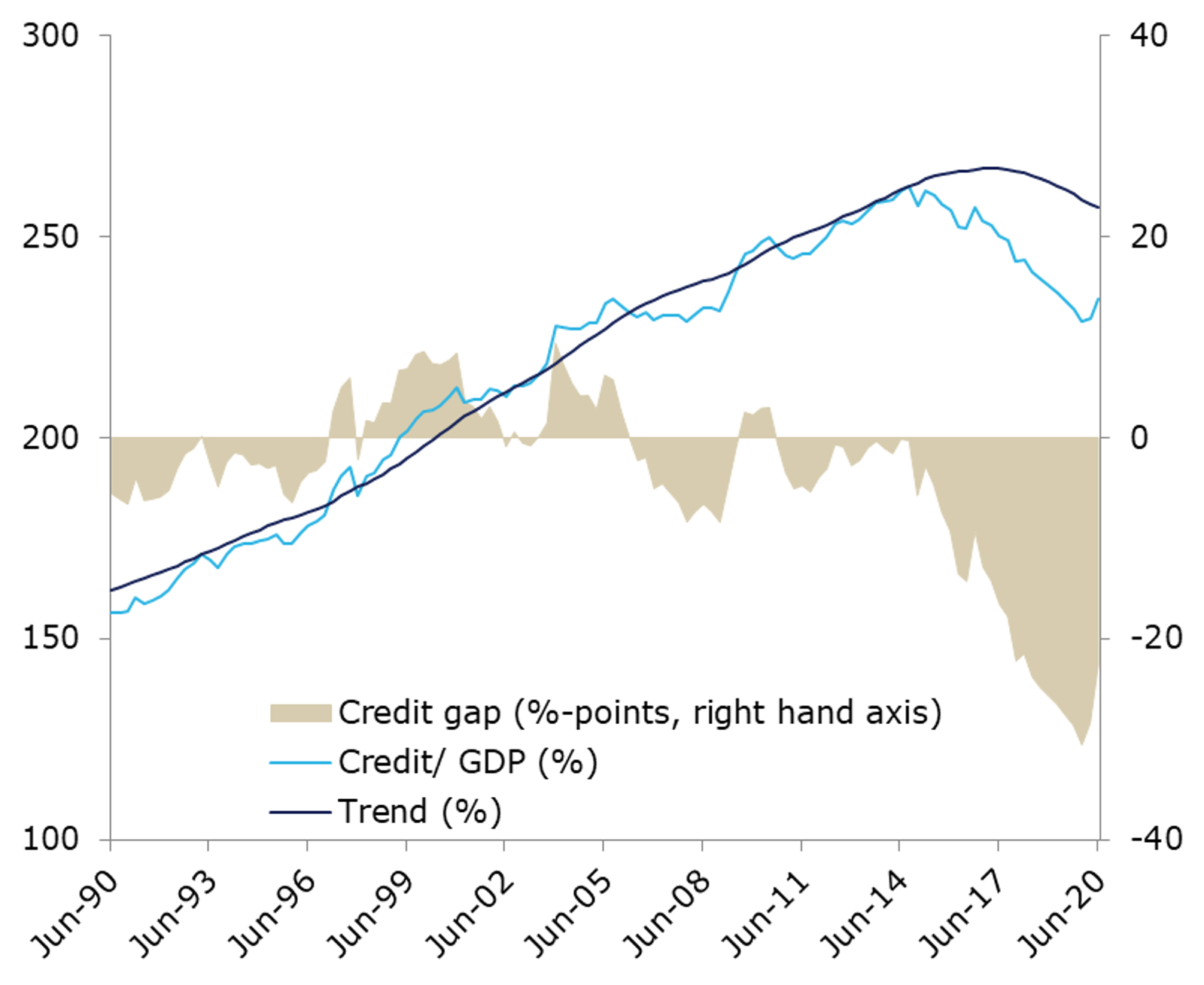
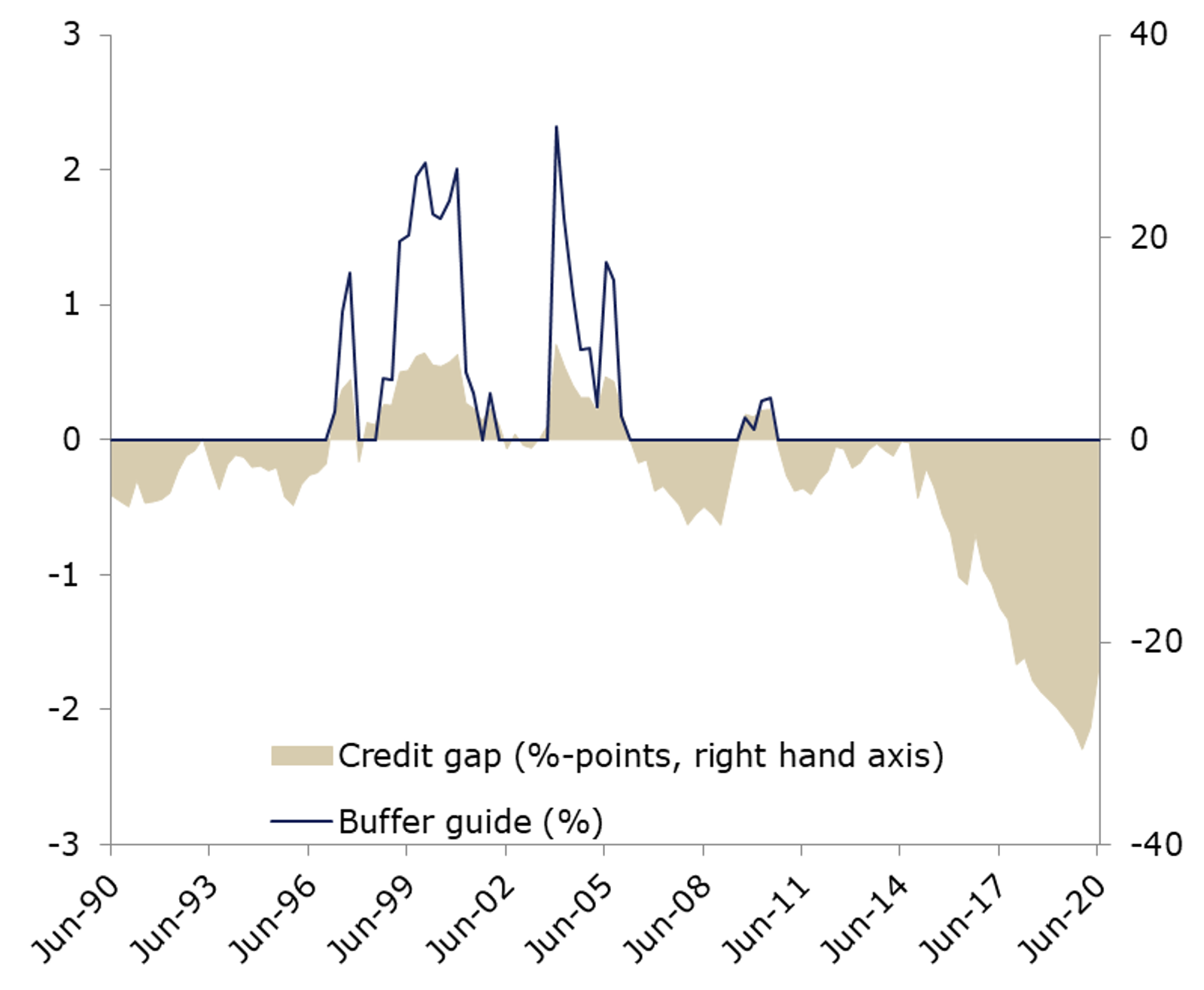
*Based on statistics ranging from Q1 1960 up to and including Q2 2020.
The credit/GDP-trend has been calculated using a HP-filter. The buffer guide is a mechanical mapping of the credit gap into a buffer add-on. See ESRB (2014), Recommendation on guidance for setting countercyclical buffer rates, ESRB/2014/1, for the calculation.
Source: Statistics Netherlands, DNB
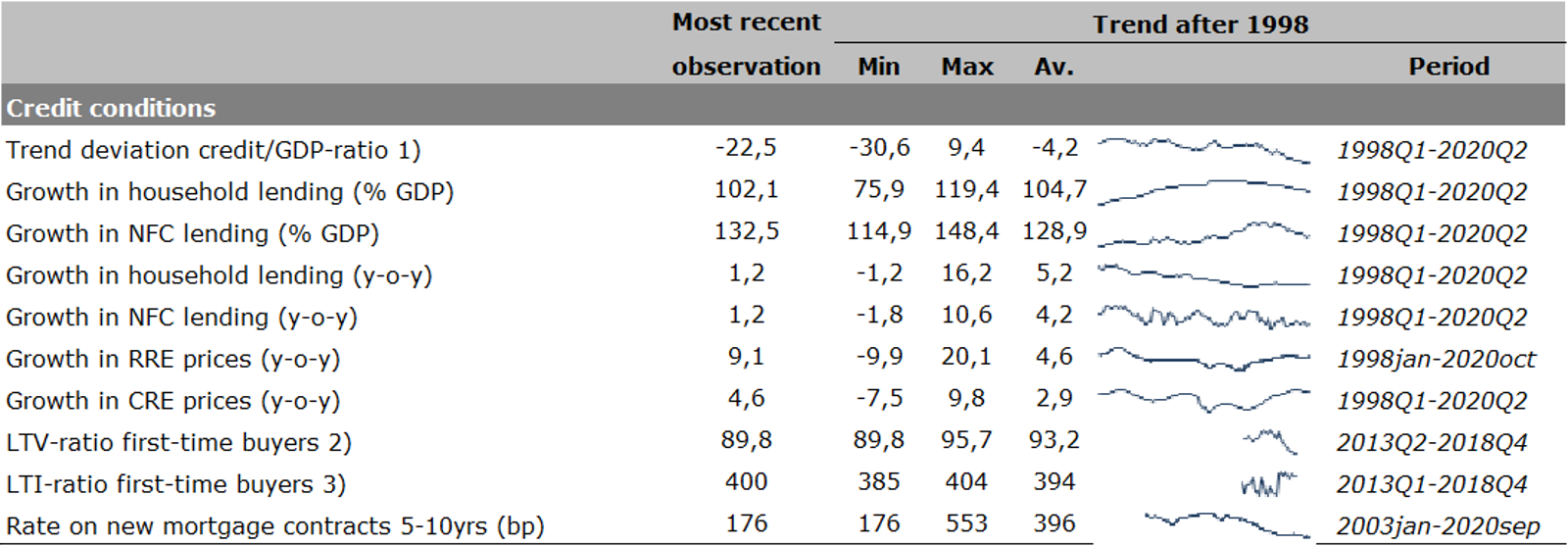
Source: Statistics Netherlands, BIS, IPD, DNB. Figures are in %, unless otherwise indicated. Bp = basis points.
1. Difference between (a) the ratio of loans extended to the non-financial private sector to GDP and (b) the long-run trend of this ratio as calculated in ESRB (2014), Operationalising the countercyclical capital buffer: indicator selection, threshold identification and calibration options, Occasional Paper No. 5.
2. The ratio of the mortgage amount to the value of the property at the time the mortgage is taken out.
3. The ratio of the mortgage amount to the income of the borrower at the time the mortgage is taken out.
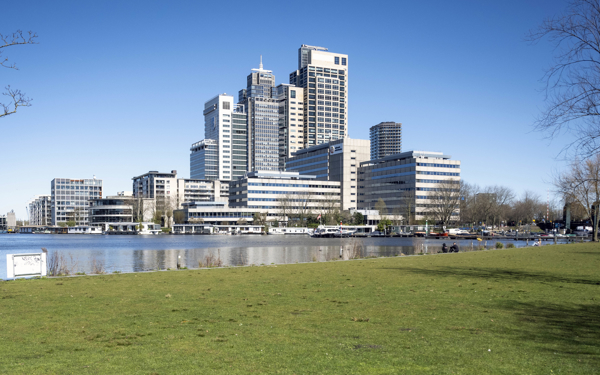
On Tuesday 28th May from 3:00-4:45 PM CET DNB will organize an online information session about fit and proper assessments.
Read more Information session about fit and proper assessments DNB
De Nederlandsche Bank (DNB) is looking forward to hosting its annual seminar on the deposit guarantee scheme (DGS) with the theme “Navigating New Horizons: Exploring the Future of the Dutch Deposit Guarantee”. The seminar will be held on Wednesday 5 June 2024.
Read more Deposit guarantee scheme (DGS) seminar: “Navigating New Horizons: Exploring the Future of the Dutch Deposit Guarantee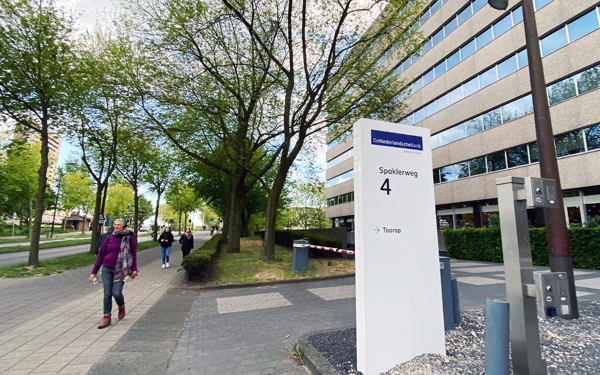
De Nederlandsche Bank (DNB) imposed an instruction on Triodos Bank N.V. (Triodos) on 6 March 2019. DNB found that Triodos was in non-compliance with statutory requirements in the area of customer integrity.
Read more Instruction for Triodos Bank N.V. in 2019 for failing to conduct sound and ethical operational management
How does one bring the professional oath to life in daily practice? Representatives from the financial sector and the supervisory authorities tackled this question at the DNB seminar on the professional oath in late 2022.
Read more The professional oath in daily practiceWe use cookies to optimise the user-friendliness of our website.
Read more about the cookies we use and the data they collect in our cookie notice.